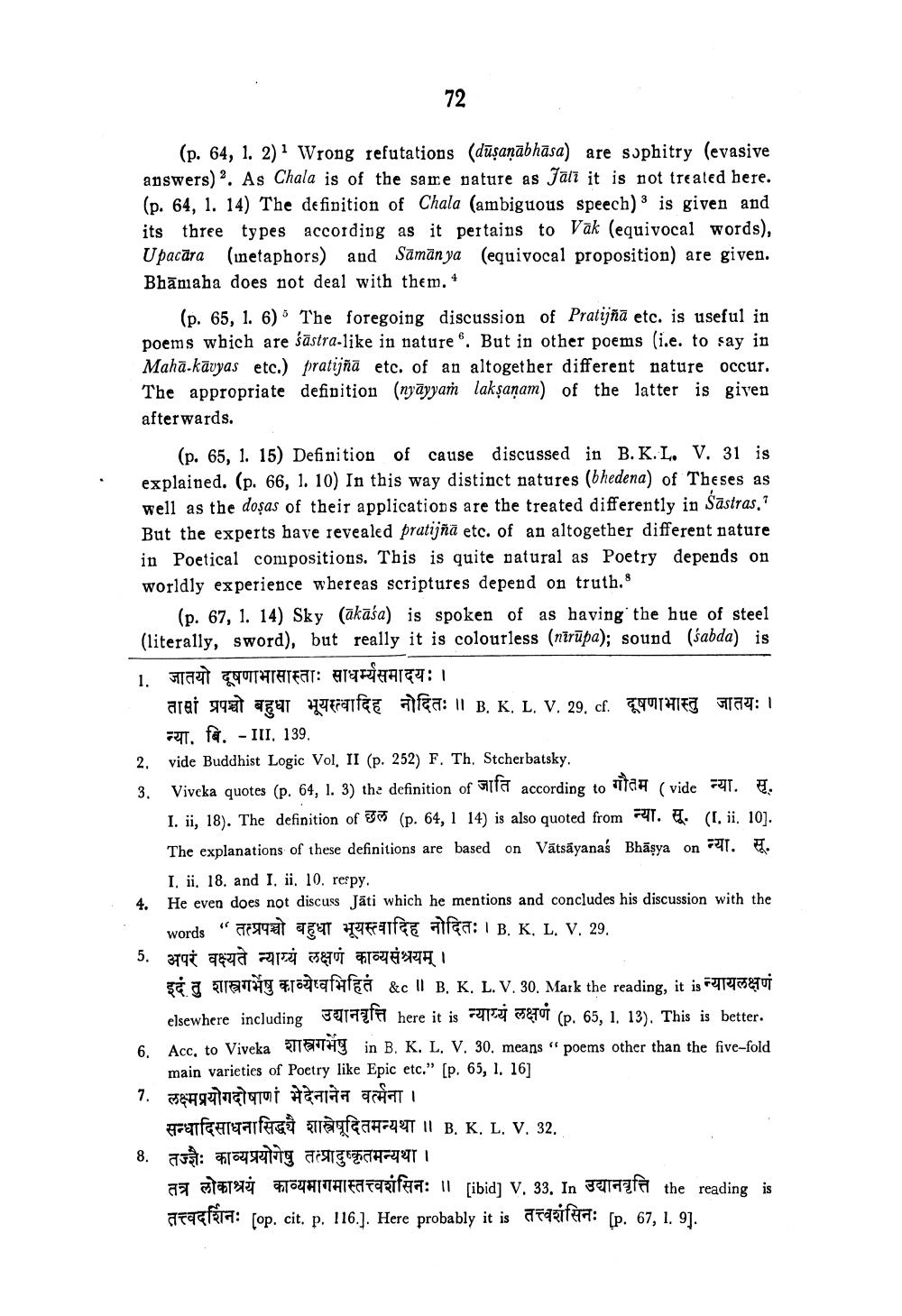________________ (p. 64, 1. 2) Wrong refutations (dusanabhasa) are sophitry (evasive answers) ?. As Chala is of the same nature as Jali it is not treated here. (p. 64, 1. 14) The definition of Chala (ambiguous speech) is given and its three types according as it pertains to Vak (equivocal words), Upacara (inetaphors) and Samanya (equivocal proposition) are given. Bhaniaha does not deal with them. * (p. 65, 1. 6) The foregoing discussion of Pratijna etc. is useful in poems which are sastra-like in nature. But in other poems (i.e. to say in Maha-kavyas etc.) pratijna etc. of an altogether different nature occur. The appropriate definition (nyayyam laksanam) of the latter is given afterwards. (p. 65, 1. 15) Definition of cause discussed in B.K.L. V. 31 is explained. (p. 66, 1. 10) In this way distinct natures (bhedena) of Theses as well as the dosas of their applications are the treated differently in Sastras.? But the experts have revealed pratijna etc. of an altogether different nature in Poetical compositions. This is quite natural as Poetry depends on worldly experience whereas scriptures depend on truth. (p. 67, 1. 14) Sky (akasa) is spoken of as having the hue of steel (literally, sword), but really it is colourless (nirupa); sound (sabda) is 1. statt TUHTAIFAT: arraATI: 1 arai 992 agu p alca alca: 11 B, K, L, V. 29. cf. UTET Aay: 1 -71, fa. - III. 139. 2. vide Buddhist Logic Vol. II (p. 252) F. Th. Stcherbatsky. 3. Viveka quotes (p. 64, 1. 3) the definition of aita according to taa (vide 731. I. ii, 18). The definition of 375 (p. 64, 1 14) is also quoted from 21. &. (I. ii. 10). The explanations of these definitions are based on Vatsayanas Bhasya on 21. . I. ii. 18. and I. ii. 10. respy. 4. He even does not discuss Jati which he mentions and concludes his discussion with the words "J a TEET FAITE allea: I B. K. L. V. 29. 5. 31 qeya gau 1621 si a trait #Toztattaa &c 11 B. K. L. V. 30. Mark the reading, it is F214&TUT elsewhere including 5017TET here it is 51 ZETOT (p. 65, 1, 13). This is better. 6. Acc, to Viveka TENTHS in B. K. L. V. 30. means " poems other than the five-fold main varieties of Poetry like Epic etc." [p. 65, 1. 16] 7. Jana #giaa HATI Falfcargarfeci stiaafa#44 11 B. K. L. V. 32. तज्ज्ञैः काव्यप्रयोगेषु तत्प्रादुष्कृतमन्यथा। तत्र लोकाश्रयं काव्यमागमास्तत्त्वशंसिनः // [ibid] V. 33. In उद्यानवृत्ति the reading is atacfara: (op. cit. p. 116.]. Here probably it is atasitet: [p. 67, 1. 9].




